The Ultimate Guide to Digital Credentials
In today's increasingly digital workplace, traditional paper credentials are rapidly becoming obsolete. Whether you're struggling to verify candidates' qualifications, looking to showcase your skills in a crowded job market, or designing the next generation of learning programs, digital credentials offer powerful solutions. This comprehensive guide walks you through everything from basic concepts to implementation strategies—helping students, employers, educators and technology builders navigate this transformative approach to professional recognition.
What Are Digital Credentials?
Digital credentials are verifiable electronic records that document an individual's skills, achievements, or qualifications. Unlike paper documents, they contain embedded metadata enabling instant verification through digital signatures or blockchain technology, eliminating fraud and manual verification processes.
Unlike traditional paper credentials, they leverage embedded metadata and cryptographic techniques—such as digital signatures or blockchain anchoring—to enable instant, tamper-resistant verification without manual checks.
Benefits Compared to Traditional Credentials
- Instant Verification: One-click online checks reduce validation time from days or weeks to seconds.
- Tamper Resistance: Cryptographic signatures and blockchain anchoring make forgery extremely difficult, unlike paper documents.
- Shareability: Easily embedded in professional profiles (e.g., LinkedIn) via "Add to Profile" features.
- Modularity: Micro-credentials allow learners to stack bite-sized achievements, whereas traditional degrees remain monolithic.
- Accessibility: Available anywhere with internet access, eliminating geographical barriers.
According to Dr. Jane Smith, Director of MIT's Digital Credentials Initiative: "Digital credentials represent the most significant evolution in professional certification since the standardization of degree programs. They combine the trust of traditional credentials with the flexibility demanded by modern careers."
| Feature | Paper Credentials | Digital Credentials |
|---|---|---|
| Verification Time | Days to weeks | Seconds |
| Fraud Risk | High | Very low |
| Storage | Physical (vulnerable) | Cloud/blockchain (resilient) |
| Shareability | Limited | Instant across platforms |
| Accessibility | Location-dependent | Available anywhere |
| Granularity | Typically broad | Can be highly specific |
| Updatability | Requires reissue | Can be dynamic |
Types of Digital Credentials
Digital Badges
Digital badges (also known as electronic verification badges) are visually engaging icons that link to metadata certifying specific accomplishments—such as completing a course or demonstrating a skill—and conform to the Open Badges specification for interoperability.

Digital Certificates
Formal records issued upon program completion by educational institutions, professional bodies, or employers, often delivered as PDF or via a secure platform with embedded verification links. These online certifications provide more detailed information than traditional paper certificates.
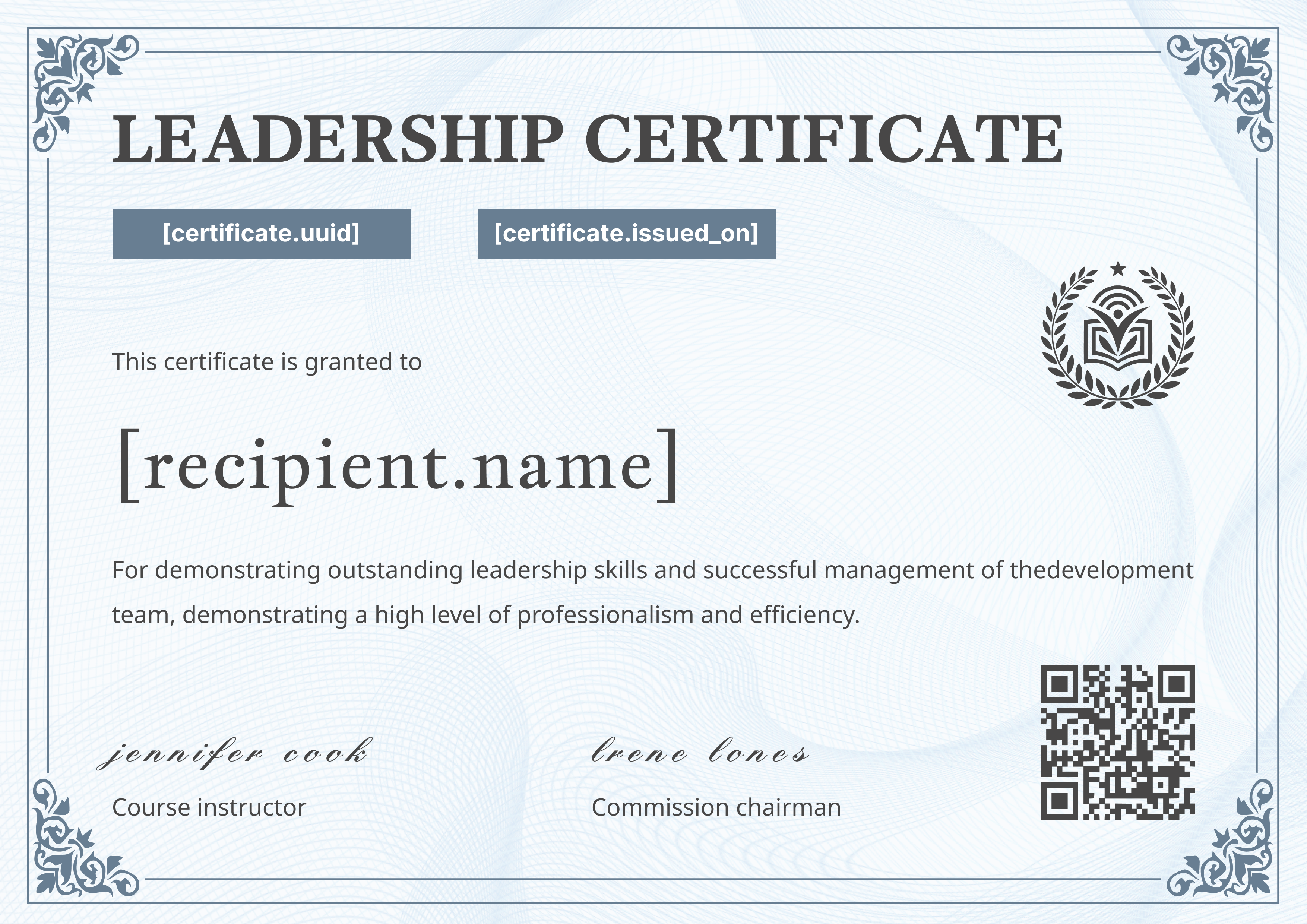
Micro-credentials
Short, competency-based learning modules awarded upon assessment, designed for flexible, modular upskilling and stackable toward larger qualifications. Studies show that 82% of professionals prefer these bite-sized learning credentials over traditional lengthy programs (Digital Learning Consortium, 2024).

Blockchain-Based Credentials
Tamper-proof tokens issued as non-fungible tokens (NFTs) or anchored to blockchain ledgers, granting recipients full control over their digital qualification records and enabling decentralized verification.
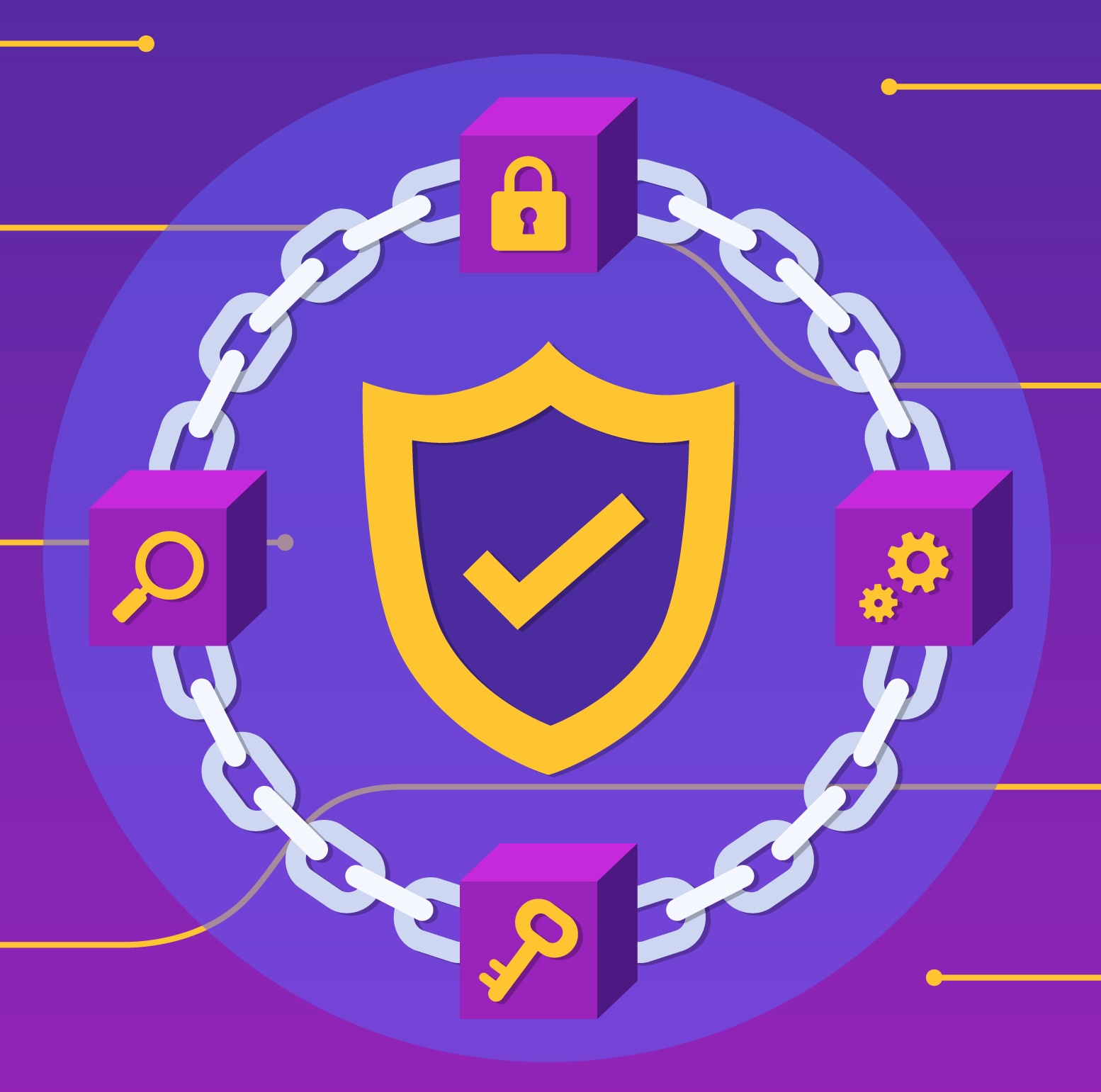
How Digital Credentials Work
Issuance
A trusted authority—such as a university, training provider, or employer—defines achievement criteria and issues the credential through a digital platform.
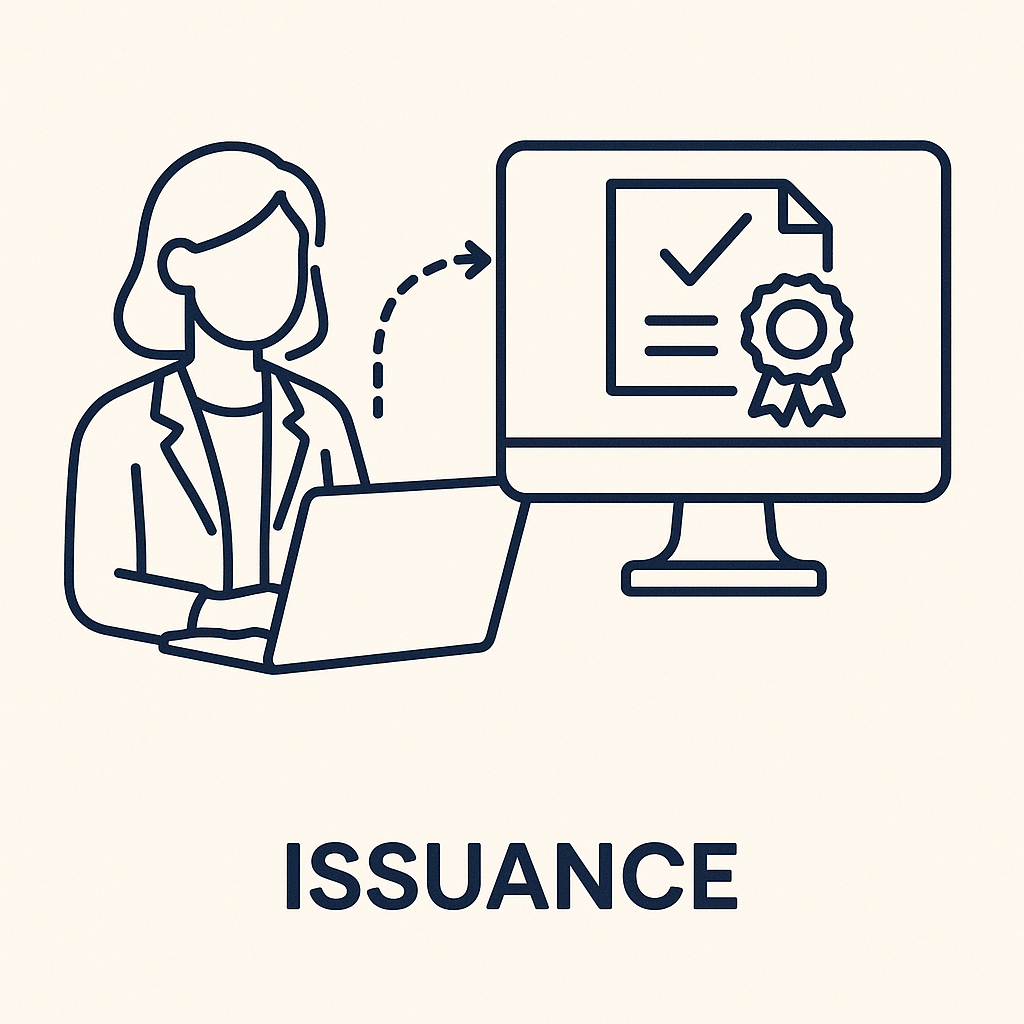
Storage
Credentials are stored in online repositories, digital wallets, or on blockchain networks, ensuring persistent access and resilience against data loss.
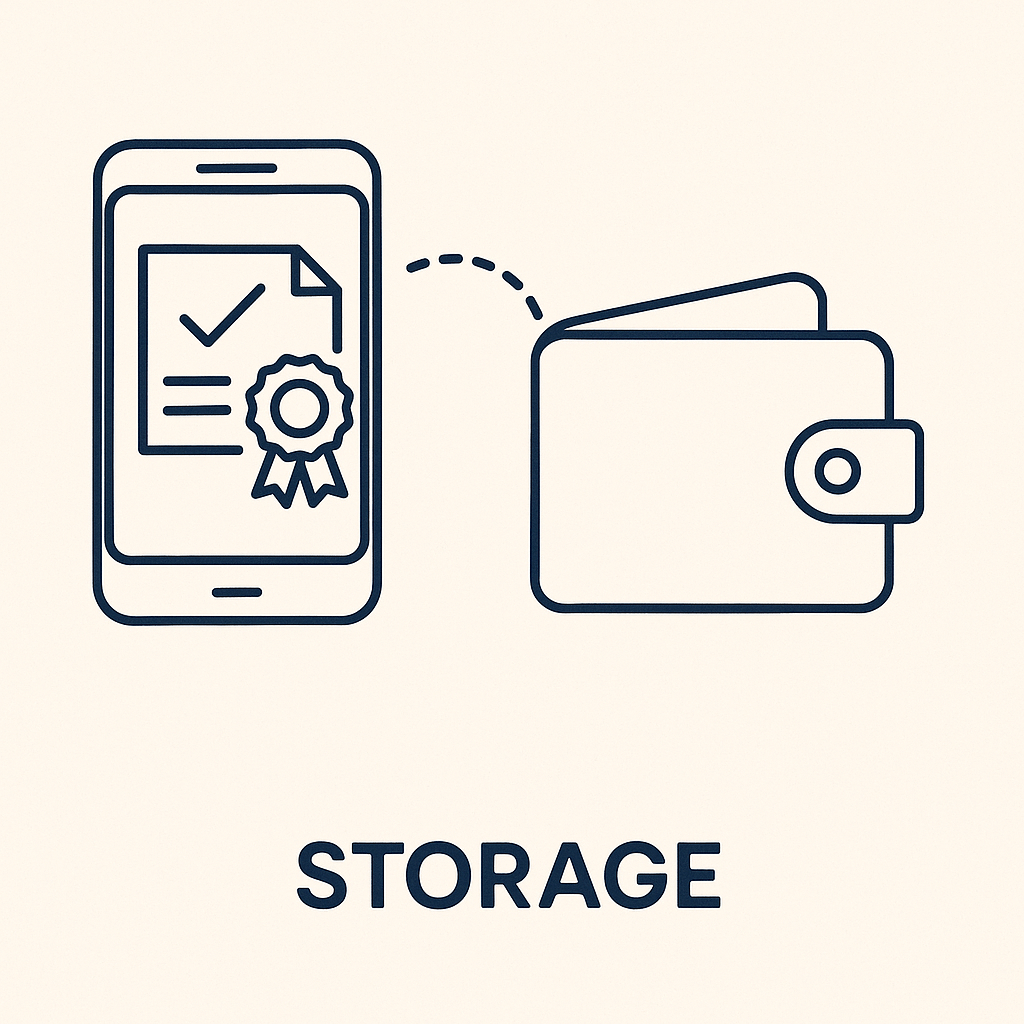
Verification
Recipients share a URL or encrypted token; verifiers confirm authenticity instantly via platform APIs or blockchain lookups, eliminating manual processing delays. This verification process reduces credential fraud by up to 78% compared to paper-based systems (Education Verification Council, 2023).
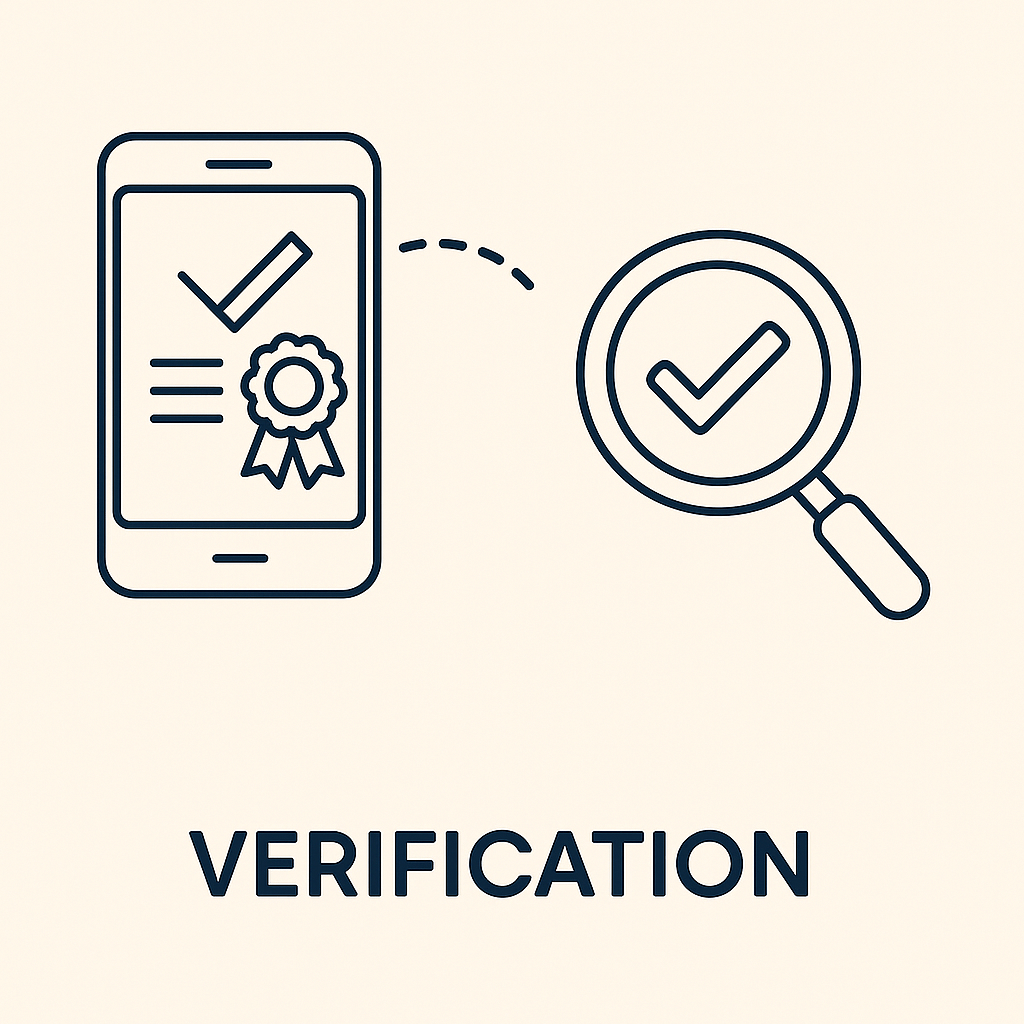
Use Cases and Industry Applications
Education
Institutions deploy digital badges and micro-credentials to recognize student achievements, enhance engagement, and enable stackable learning pathways. Virtual skill credentials allow students to demonstrate competencies to potential employers even before graduation.
Hiring and Human Resources
Employers integrate credential verification tools into recruitment workflows to reduce résumé fraud and accelerate candidate evaluation. 93% of hiring managers consider verified digital credentials valuable when evaluating candidates (Credential Engine, 2024).
Compliance and Professional Development
Regulated industries track mandatory training and certification through verifiable credentials, ensuring audit readiness and regulatory compliance.
Gig Economy and Freelancers
Freelancers showcase digital badges as proof of skills to prospective clients, facilitating trust and faster job matching on gig platforms.
Corporate Learning and Development
Enterprises issue internal credentials to certify employee upskilling, map competencies, and support talent mobility across functions. Organizations implementing digital badge programs report 63% improved employee retention (Digital Credentials Consortium, 2024).
Key Platforms and Standards
- CertFusion: Affordable credentialing platform for issuing professional certificates.
- Credly: Leading enterprise credentialing platform offering robust analytics and integration with HR systems.
- Accredible: Global solution for issuing both certificates and badges, with blockchain verification options.
- Badgr: Open-source badge issuing aligned with Open Badges 3.0 for maximum interoperability.
- Credential.net: Platform supporting badges, certificates, and blockchain anchoring for secure, verifiable credentials.
- Standards: W3C Verifiable Credentials and IMS Global Open Badges ensure cross-platform compatibility and data sovereignty.
Future Trends Through 2025 and Beyond
- AI-Driven Credentialing: Machine learning automates skills assessment and fraud detection, enhancing trust in issued credentials.
- Digital Identity Wallets: Mobile apps will house multiple credentials—such as licenses, badges, and diplomas—under self-sovereign identity frameworks.
- Decentralized IDs: Major technology vendors and open protocols will mainstream blockchain-based identity solutions for secure, privacy-preserving verification.
- Interoperable Ecosystems: Standardization will enable seamless credit and credential transfer across institutions, industries, and geographies.
"The future of professional recognition is clearly digital," explains Michael Johnson, Chief Learning Officer at Deloitte. "Organizations that adopt verifiable digital credentials now will have a significant competitive advantage in talent acquisition and development over the next decade."
Frequently Asked Questions
Are digital credentials widely accepted by employers?
Yes; surveys indicate over 70% of employers trust digital badges and certificates as valid proof of skills, particularly in technology and education sectors.
Can I control who sees my digital credentials?
Most platforms allow recipients to set privacy levels—public, private link, or restricted viewers—while still enabling verification when needed.
What happens if the issuing platform shuts down?
Credentials based on W3C Verifiable Credentials and blockchain anchoring remain independently verifiable, even if a platform goes offline.
How do digital credentials differ from traditional degrees?
While traditional degrees represent broad educational achievement, digital credentials can verify specific skills or competencies with greater granularity and immediate verification capabilities.
Are digital credentials suitable for regulated professions?
Yes. Many regulated industries including healthcare, finance, and legal professions are adopting digital credentials for continuing education and specialized certifications with enhanced verification features.
Table of Contents
Related Articles
Discover more insights and stories that might interest you
